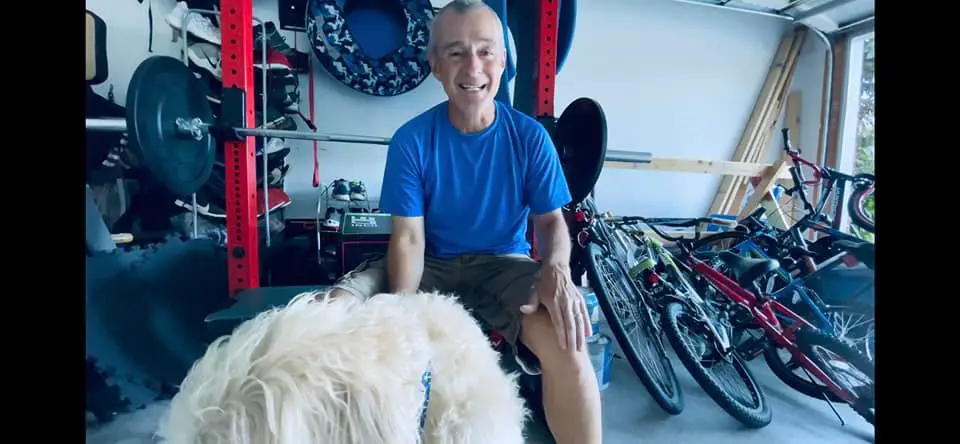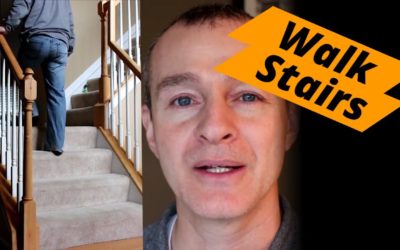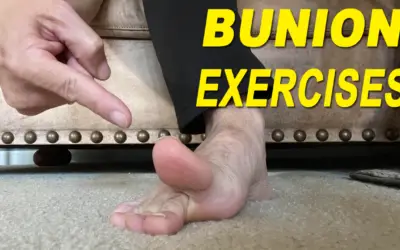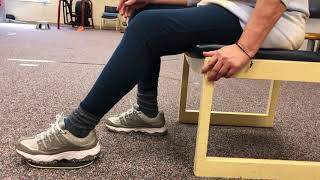Why Does A Knee Pop When Standing From A Chair: Total Knee Replacement Questions
Facebook Question About A Knee Pop Sensation
“I am 2 yrs post op on my right knee and when I get up from a sitting position it makes a pop sound almost all of the time. Is that normal.”
My response: Watch the video below to localize where the knee popping is coming from. If it is on the outside of the knee it is likely the fibular head popping or clunking over the lateral condyle of the tibia.
If it is under the knee cap (patella) it could be a patella tracking issue.
In my physical therapy clinic, I would assess each of these areas along with a lateral stability test to determine if the medial or lateral collateral ligaments are intact.
Finally, I would look at changing the alignment of the foot relative to the midline during a sit-to-stand motion to determine if you are able to stop the knee pop from happening when you turn your foot in or out.
Why does the outside of my knee pop when I stand from a chair?
A knee pop in this scenario is most often attributed to the fibular head popping back or forward over the lateral aspect of the lateral condyle of the proximal tibial bone.
The lateral hamstring muscle is pulling on the fibular head and as the tibial bone rolls and glides around the femur, it may also rotate contributing to the popping sensation.
Walking Down Stairs
This same scenario may happen while walking downstairs. Suppose you are stepping your non-surgical foot down a step and supporting your body weight on the total knee replacement post-surgical leg.
In this case, a similar lateral popping sensation may be experienced as the knee goes from extension to flexion under the eccentric load of lowering your body down to the next step.
Knee Pop Under the Knee Cap (Patella)
Following a total knee replacement, many patients will have a new alignment of the femur and tibia. Before total knee replacement, the knee might have been more varus or valgus.
This new alignment will require the patella and patella tendon to move differently within the patellar groove. It is not uncommon to experience a popping, clucking, or even velcro-like ripping sound when the patella or patella tendon is moving in the new alignment.

What Can Be Done to Stop the Knee Pop?
Once you or your therapist determines what structure is causing the knee pop sensation, a treatment program may be developed.
Fibular Head Knee Pop
If the fibular head is causing the knee pop then I would work on tibial rotation within what the total knee replacement implant would allow.
I would consider habitual changes like remembering to position your foot in a way that eliminates the knee pop before standing.
Patella Knee Cap Knee Pop
If it is the patella that is causing the knee pop I would consider self-massage techniques to loosen resisted soft tissue structures surrounding the patella and I would have a physical therapist help to analyze my hip, knee, and ankle alignment to optimize patellofemoral tracking.
When can I walk upstairs normally after TKR?
Article Updated: 09/02/2023Walking Upstairs Post-Op Throughout my extensive career as a physical therapist specializing in total knee replacements, I've observed a consistent pattern: the 10-week post-operative mark often serves as a significant milestone for...
Do Toe Spacers Help Bunions
Yes, toe spacers help bunions by mechanically realigning the great toe with the natural structure of the medial foot and arch. Toe spacers should initially be used for short periods of time, up to 20-minutes a day during the first week before increasing to several...
Heel Slides After Knee Surgery
"I would like to know when we can officially give up the darn heel slides and other stretch exercises, or do we need to continue forever?" Heel slides after knee surgery are just one of many exercises available to increase range of motion, reduce swelling, and regain...



